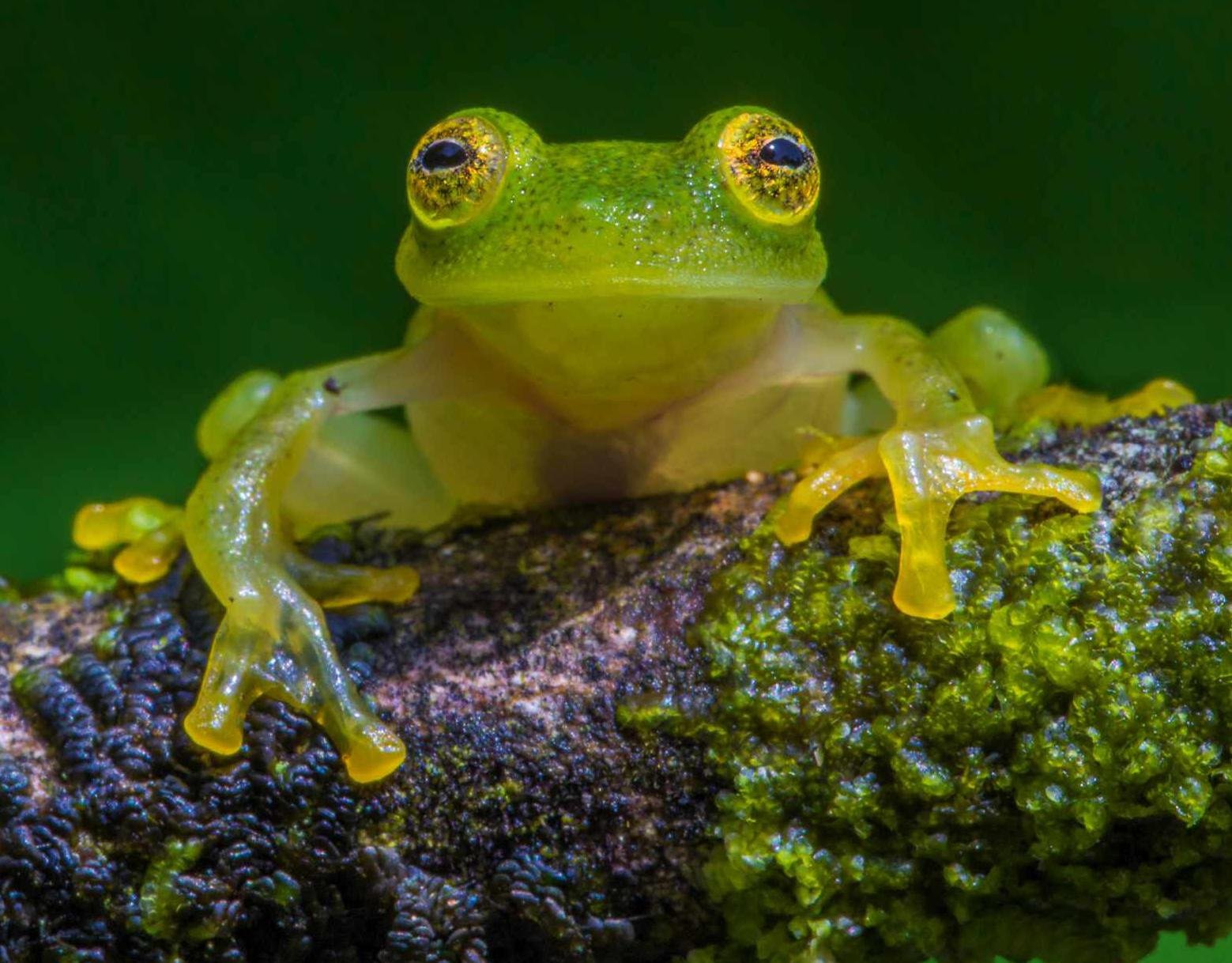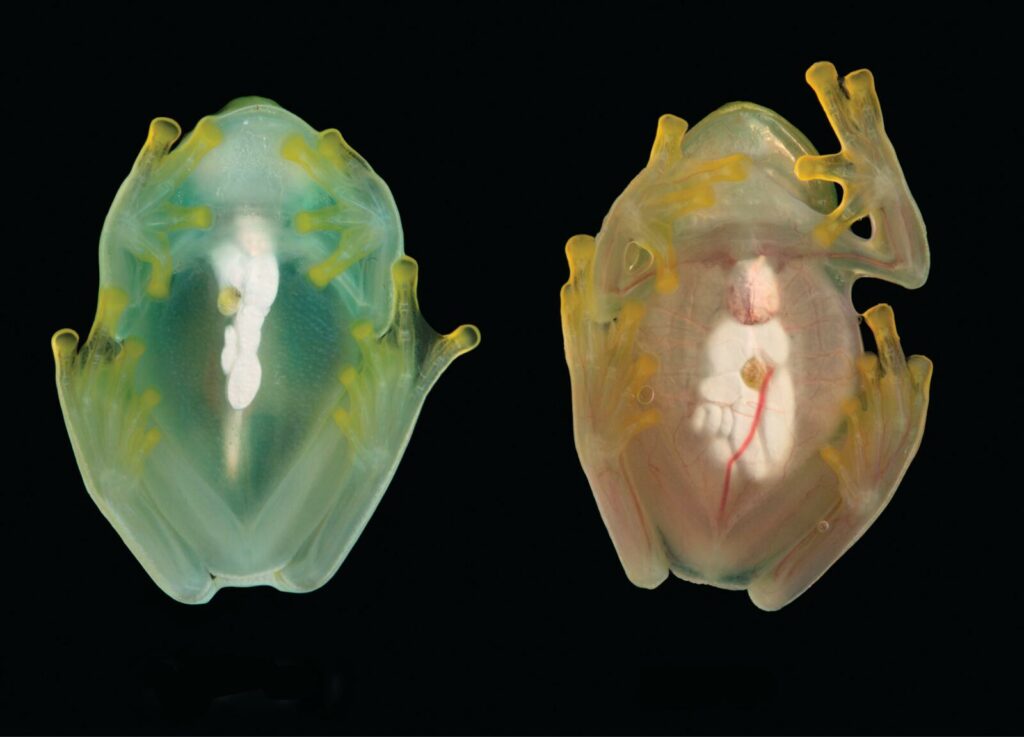Sleeping glassfrogs perfect their transparency by hiding their blood in a mirror-coated liver

THE GLASSFROGS OF TROPICAL AMERICA have probably come closer than any animal to developing an invisibility cloak. And new research reveals the lengths to which these remarkable amphibians go to perfect the illusion.
Camouflage is usually achieved by matching one’s own colour patterns to those of one’s surroundings. But glassfrogs do things very differently. They have managed to rid their bodies of virtually all pigment to make themselves almost entirely transparent.
“They have this suite of adaptations,” says Carlos Taboada of Duke University, USA. “They have transparent skin, they have transparent muscle and they have light-reflecting crystals in their organs.”
One of the few pigments glassfrogs are unable to dispense with is the red haemoglobin in their blood, which is essential for transporting oxygen around their bodies. But the latest research by Taboada and his colleagues, published in Science, shows how Fleischmann’s glassfrogs have found a way around that problem, too – at least while they sleep, when they are most reliant on their camouflage.
The team found that sleeping frogs divert nearly 90 percent of their red blood cells to their liver, where they are hidden from view behind a layer of mirror-like crystals. This renders the frogs up to 61 percent more transparent than when they are awake, when they need their red blood cells to be circulating to fuel active muscles.

Should a predator see through the disguise, the frogs are able to restore blood flow and mobility “immediately,” says Taboada’s colleague Jesse Delia. “Give them a prod and they’ll wake up and go jump.”
Intriguingly, several species of distantly related frogs have evolved the transparency strategy independently, although it’s not yet known whether they are all capable of hiding their blood. “We’re working on that,” says Delia. He speculates that frogs’ tendency to shut down their metabolism during hibernation might predispose them to such a capability. “It could be a sort of general frog trick, and these glassfrogs have elaborated it,” he speculates. “There are a million questions here.”

Co-lead author Carlos Taboada